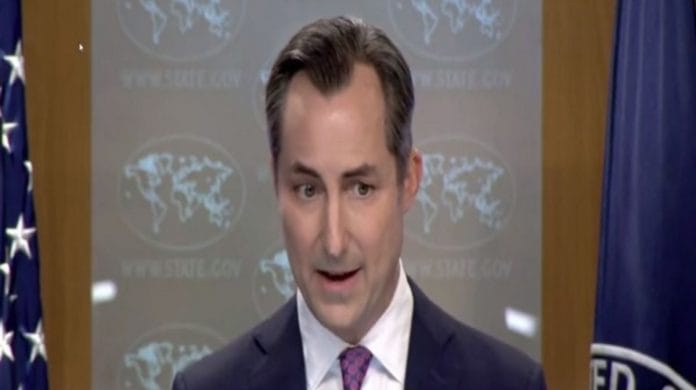New Delhi: India has briefed the US about its arrangements in the Line of Actual Control (LAC) leading to disengagement with China, the Department of State said Tuesday.
At a press briefing, US State Department spokesperson Matthew Miller also said America had no role to play in this resolution.
“We understand that both countries have taken initial steps to withdraw troops from friction points along the Line of Actual Control. We welcome any reduction in tensions along the border,” Miller added.
The US has in recent years become an important defence and security partner for India. A number of key agreements have been signed, including the Security of Supplies Agreement (SOSA) and an Memorandum of Understanding (MoU) on the Assignment of Liaison Officers.
India is now preparing to carry out its first patrol to patrolling points (PP) 10, 11, 12, 12A, and 13 since January 2020.
The Army on Monday physically verified the withdrawal of Chinese troops from the Depsang plains and Demchok according to the agreement signed on 21 October between the Corps Commanders.
Last week, the Ministry of External Affairs (MEA) had announced that an agreement leading to the eventual disengagement in the LAC had been reached between India and China—a small step to resolving the border dispute that escalated in the summer months of 2020.
The consensus would see both countries limited to patrolling the areas twice a month with a fixed contingent of 15 personnel, after informing the other of a scheduled patrol to reduce chances of confrontations.
In June 2020, the two militaries clashed in Galwan, which led to one of the largest deployments of troops on either side. The border stand-off triggered a number of political repercussions—such as the restriction of direct flights from China. Initially a COVID-19 measure, New Delhi still has not allowed flights to resume, as well as reducing visas to Chinese nationals.
Following the border accord, Prime Minister Narendra Modi and Chinese President Xi Jinping met on the margins of the BRICS summit in Kazan, Russia last week. It was the first structured meeting between the two leaders since 2019.
The two had had a brief exchange on the sidelines of the G20 summit in Bali in November 2022, but high-level ministerial meetings did not take place till July 2024.
External Affairs Minister S. Jaishankar met his Chinese counterpart Wang Yi twice in July, while National Security Adviser Ajit Doval also met the Chinese foreign minister in September in Russia—a flurry of diplomatic activity which pointed towards the impending thaw.
(Edited by Tikli Basu)
Also read: Indian & Chinese troops start disengagement at Depsang. What the LAC pact entails






